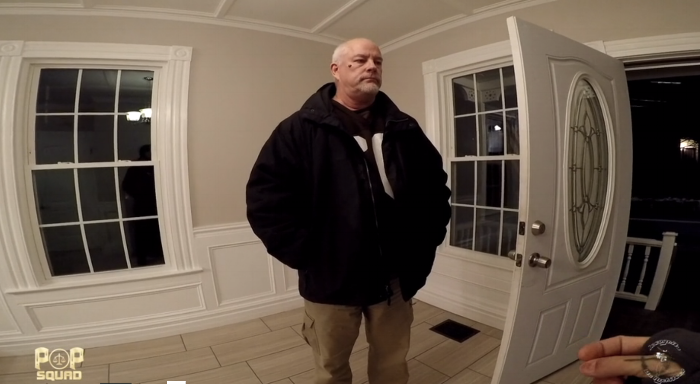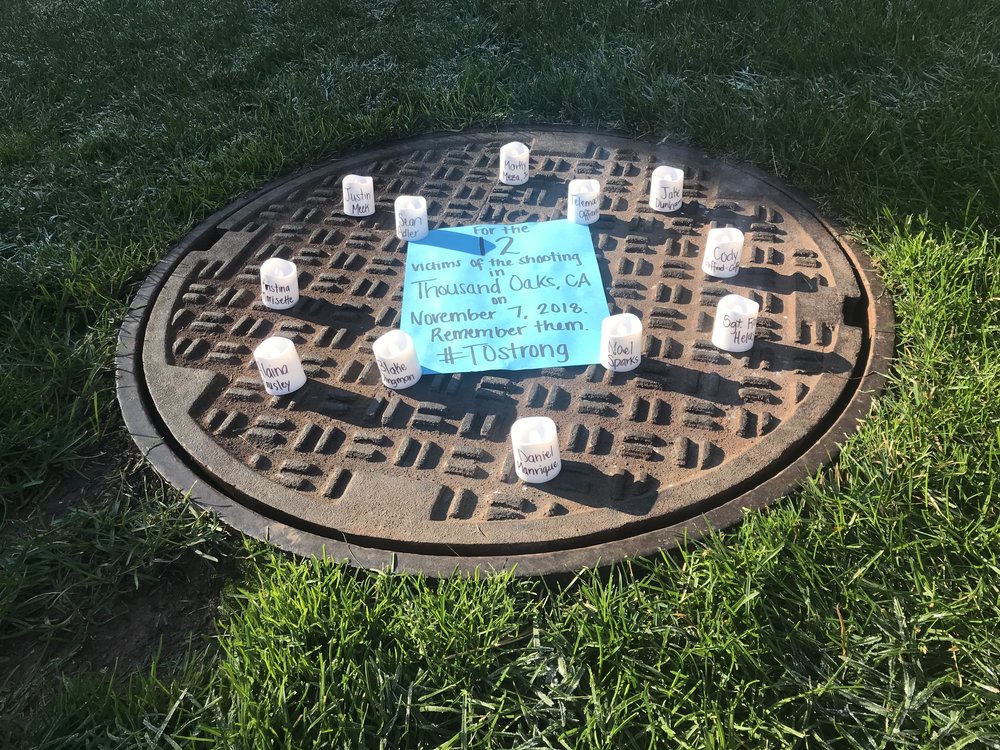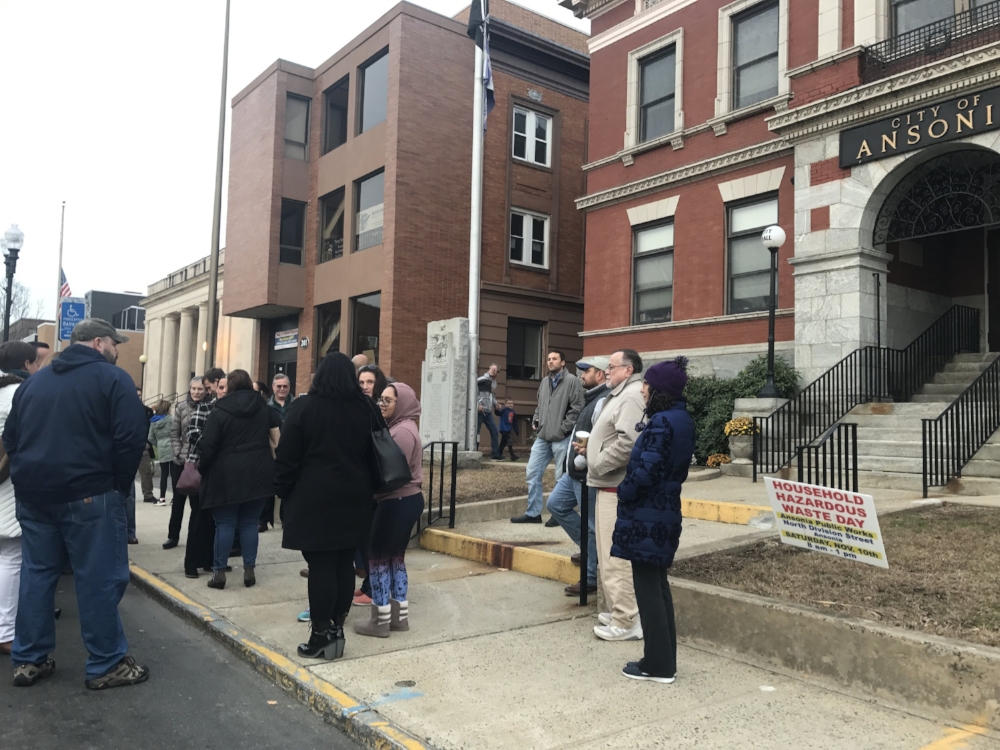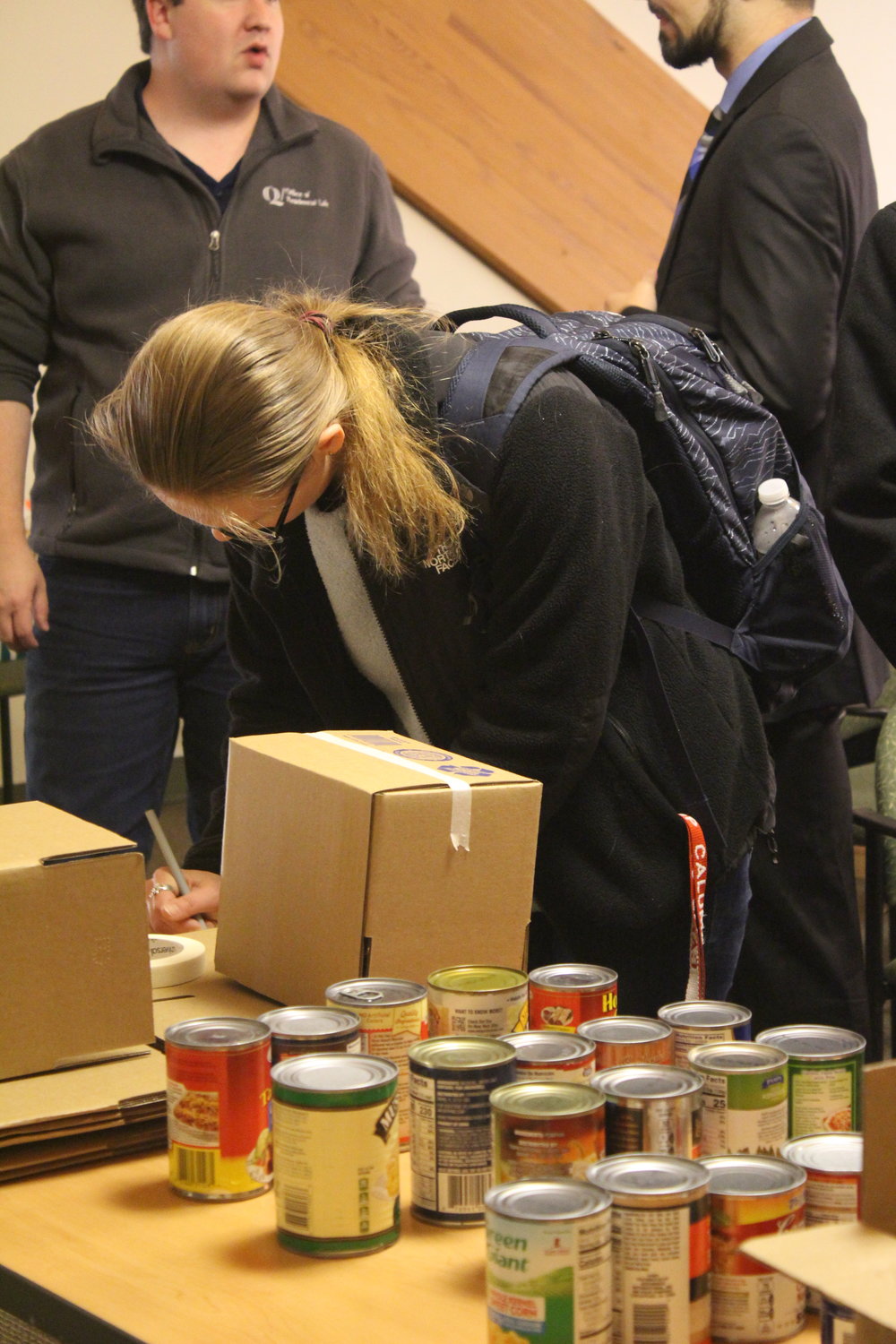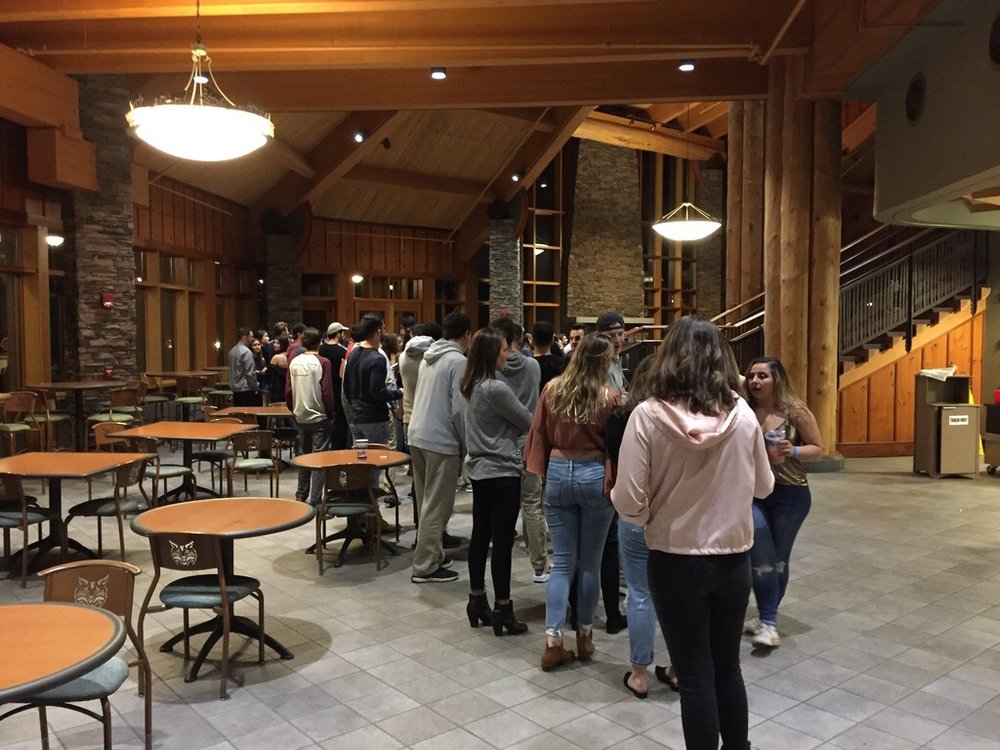By Aron Fried
HAMDEN, Conn. — South of Quinnipiac University, Whitney Avenue is lined with restaurants and shops and is considered Hamden’s central hub.

Green areas are connected to the sewer. On the map on the right, the area north of “Mill River” is all on septic.
Drive north, past Quinnipiac and Sleeping Giant State Park, and sidewalks disappear a few miles out. Businesses become scarce, and the spaces between buildings start to resemble football fields.
Charles Hague, a business owner on that stretch of road, thinks sewers, of all things may play a role in creating those stark differences. Specifically, the fact that there aren’t any.
His restaurant and bar, Aunt Chilada’s, has been there 25 years. It’s a popular spot among Quinnipiac students and like almost every other business and home in northern Hamden, it has a septic tank.
data-animation-override>
“It’s an extra burden and an extra cost”
“It’s an extra burden and an extra cost,” Hague said.

Cement lids of Aunt Chilada’s septic tank.
Buried underneath Aunt Chilada’s front lawn, the septic tank doesn’t look like much above ground, just nine cement disks in a row. Hague calls it ugly. For a restaurant owner, he knows an awful lot about how septic tanks work. He needs to.
Septic tanks are domestic wastewater treatment systems, built underground and usually made of concrete, fiberglass or plastic. The tank collects both liquid and solid waste and filters the water to the surface.
The water moves through a pipe and into to a leaching field where it disperses. The solid waste is pumped out periodically and transported to a treatment facility. The diagram below shows the basic functionality of a septic tank.

Septic systems differ from the more common sanitary sewer, which is an interconnected system of underground pipes that carry sewage directly to a wastewater treatment facility.
Sewers are generally publicly owned, while individual septic tanks belong entirely to the property owner, and — as a result — he or she is forced to face the entire cost of maintenance and repairs.
“It’s costly, and you basically put people that are not in the sewer business in the sewer business,” said Tom Sgroi, the director of engineering at Greater New Haven Water Pollution Control Authority (GNHWPCA), the wastewater treatment facility that has served Hamden since 2005.
It’s a predicament that could be unattractive to potential new business owners, especially those who want to open restaurants, which produce a lot of waste.
A standard septic tank for a three-bedroom home holds about 1,000 gallons and the solid waste needs to be pumped every three to five years, according to EPA recommendations. Hague’s tank holds 5,000 gallons and it gets pumped four times a year by different private companies.
Hague said it costs him thousands of dollars annually, but he would not be specific.
By comparison, pumping a standard 1,000-gallon tank generally costs between $150 and $300. In the case of complete system failure, the cost to replace the tank also falls entirely on the owner, which could be anywhere between $3,000 and $7,000 or sometimes even more, depending on a wide variety of factors.
While the cost of the septic tank didn’t deter him from opening Aunt Chilada’s on Whitney Avenue, Hague said most businesses would rather not have to take the risk.
Brad Macdowall, a district representative in Hamden, is concerned about the town’s ability to recruit new businesses, especially considering its current economic situation.
A 2018 report by the Yankee Institute for Public Policy, a conservative think tank, found Hamden to be in the worst financial condition of all Connecticut towns.
Macdowall acknowledged Hamden’s struggles, but made sure to point out the partisan nature of the organization. He also stressed the importance of turning Hamden into a place that could sustain business growth.
“We’re not going to see the kind of new business expansion that we need to see if we’re not offering the kind of infrastructure that those kinds of businesses need,” Macdowall said. “Why would a business expand there if they can go elsewhere with the sort of infrastructure that they’re looking for?”
Apart from the lack of sewers, the location — just minutes away from Quinnipiac — which has grown tremendously in the past couple of decades, couldn’t be better for business.
Despite that, the area remains largely underdeveloped — much to Hague’s surprise.
That section of Whitney Avenue hasn’t changed much since Hague has been there. He has begun to believe it will not change.

Aunt Chilada’s exterior and interior.
Hamden resident Paul Ferraro feels similarly and thinks new businesses could liven up the town.
“Businesses have been in and out, which is strange considering the amount of traffic from the school,” Ferraro said. “I’d like to see more come to stay.”
Macdowall wants more business in this area. To do so, he believes the Town of Hamden must expand the sewer system to cover at least Whitney Avenue all the way north to Cheshire.
The expansion is part of Macdowall’s vision to reduce the long-term financial burden on business owners and residents and allow them to forget about their sewage.
However, it’s a lot more complicated than Hamden just signing off on new infrastructure development since the GNHWPCA owns the sewers and would have final say on any new additions to the existing system.
Right now, Hamden is having early discussions about putting together a plan, according to Mark Austin, the town engineer.
“I heard some chatter going on about it recently,” Austin said, but chose not to elaborate.
Macdowall confirmed that the Town of Hamden administrators are taking some of the first steps.
“We’re doing the research and we’re doing our due diligence so that we can show the water authority why this would be beneficial,” Macdowall said.
According to Section 4 of the GNHWPCA’s Sewer Ordinance, the governing body of the municipality has to approve the project before proposing the expansion.
Sgroi calls it a “chicken and egg” situation, because the GNHWPCA generally doesn’t care if a town wants to connect or add to its sewer system as long as it has the capacity at the plant, everything works properly and it doesn’t impact any of the existing system or its existing customers.
This puts the pressure back on Hamden, which, though it does not own the sewers, would have to ensure any new infrastructure meets the requirements of the treatment facility.
The uneven terrain makes matters more difficult. Running into rock, for example, presents a real risk and, Austin said, “that gets really expensive really quick.”
Hamden is already deep in debt, and while Austin said the Town of Hamden would have to pay the initial cost for installation, Macdowall is confident Hamden wouldn’t end up paying for anything. In reality, he said, the cost would show up in residents’ water bills.
Austin added, “As people connect to the new sewers, they pay their portion of the cost to put it in. So ultimately, the cost goes to the user.”
In the long run, connecting to the sewage system could still be cheaper.
Hague, for one, would welcome the change.
For him, it would mean no longer having to worry about the upkeep of a septic tank, and he would appreciate not shouldering that burden as, he said, business owners do prefer sanitary sewers.
Macdowall doesn’t think projects with the potential to stimulate the economy can wait, either.
“Quite frankly, I think we can’t afford not to do it,” Macdowall said. “If we keep using initial cost as a reason to not continue to develop, then we’re going to stay behind. We’re going to continue to fall behind and stay behind.”
